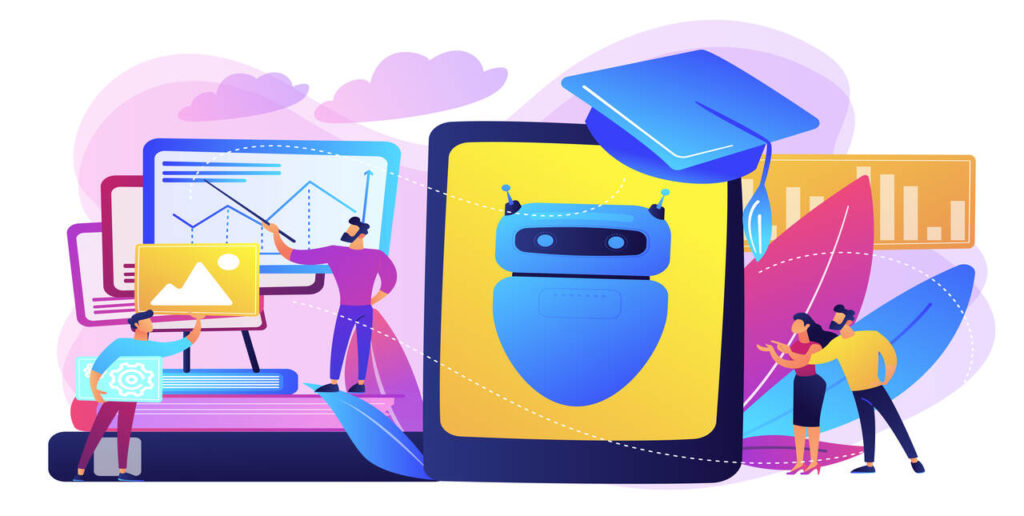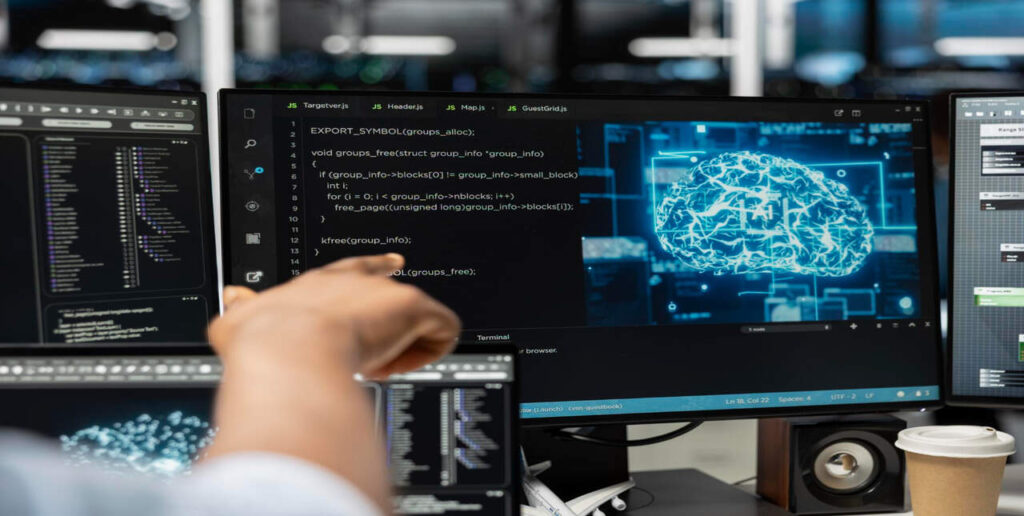AI Transparency in 2025, artificial intelligence will no longer be a sci-fi fantasy or a trendy term. It’s everywhere — from the apps we use every day to the choices of banks, hospitals, and even government ministries. Yet as AI gets stronger, questions are being raised. How does AI make its decisions? Who controls it? And most critically — can we trust it?
This is where AI transparency comes in. Not a passing fad, but a requirement for trust. In essence, transparency means being open to sharing how the AI system operates, what is in it’s black box, and how it makes decisions. People are afraid of AI; however, trust develops when they are able to view the activities of their governments’ and businesses’ AI systems with open algorithms, open documentation, and ethical guidelines.
Let’s explore what transparency is doing for AI in 2025 and the importance of open algorithms to ensure that this technology can be trusted by all.
Why Transparency in AI Matters Now More Than Ever
In the olden times, AI choices were seen as magic — fast, smart, and accurate. But over time, cracks started to show. It was found that AI could be biased, unjust, or even worse, if not controlled. By 2025, these problems are no longer hidden in research labs — they’re on front pages of websites, in courtrooms, and in everyday conversation.
imagine an AI system rejecting a loan application, recommending a jail sentence, or vetting job candidates — all without explanation. That’s not only unjust — it’s wrong.Transparency is the solution. By knowing how and why an AI system comes to those decisions, we can hold it accountable and make amends for its mistakes and believe in its outcomes.
That is not the definition of transparency – making every line of code available for the public domain. Transparency does mean making AI systems explainable and understandable — not just for engineers, but for ordinary people.
Open Algorithms: The Heart of Transparent AI

The phenomena of open algorithms will be at the core of AI transparency in 2025. Simply said, an algorithm is a collection of guidelines or instructions used by AI to make judgments. Businesses that use open-source algorithms give specialists and even the broader public access to observe how the AI system functions.
This doesn’t just build trust — it leads to better AI. Open algorithms are testable for bias, can be improved by community input, and are held to greater ethical standards. If a doctor’s AI is based on an open algorithm, doctors can make sure it’s not racially or gender discriminative, income discriminatory. If an AI is used in schools to grade, open algorithms give a foundation for making the grading fair.
Most American governments and businesses will begin to require open or explainable AI by 2025, particularly in high-risk sectors like healthcare, banking, and criminal justice.
The Role of Explainability in Building Public Trust
While not all AI is entirely open, much of it is now explainable — and that’s a huge step in the right direction. Explainable AI (or XAI) is a system that can tell you why it has made a certain choice in terms that are understandable to humans.
For instance, if your job application is rejected by an AI tool, explainable AI would be able to tell you, “The decision was made based on your limited experience in the area of a necessary skill.” That is a lot better than a plain “Rejected” without a reason.
By 2025, explainability is the minimum expectation, especially in the U.S. market. Users, regulators, and even tech leaders all agree humans should be able to see what’s behind the curtain.
Government Regulations Driving Transparency
The fact that American officials are taking action is one of the reasons why AI transparency has become so crucial in 2025. Companies are being pressured by new state and federal regulations to disclose more information about the operation of their AI systems. Such regulations tend to require:
- Pre-deployment risk assessments
- Public reporting of AI models
- Independent auditing to scan for bias or discrimination
The transformation did not occur overnight. AI work has historically been carried out in secret and behind closed doors. However, following various scandals—unfair hiring practices, faulty facial recognition, etc.—the public demand was transparency. From that point on, transparency has ceased to be a good-to-have; it has become a mandatory ethical and legal requirement.
Big Tech’s New Approach to Openness

To assuage public opinion and comply with legal requirements, the tech giants are also changing tactics in 2025. Some, like Google, Microsoft, and Meta, are releasing model cards — detailed documents that outline how an AI model was trained, what it is trained on, and what it’s good (or bad) at.
Some are forming ethics boards and AI safety groups to review their systems before they go live. They’re even publishing reports on mistakes that their AI systems committed. They’re also exposing how the bugs were fixed — something inconceivable a couple of years ago.
This culture change is helping to restore trust among the public. It is showing that businesses are embracing transparency as a pillar of sound innovation rather than a threat.
Transparency and Fighting AI Bias
Bias is arguably the biggest issue people have regarding AI. When an AI system is trained on biased data, it can make unfair decisions. Consider facial recognition software, for example.If facial recognition software has mostly been trained on light-skinned faces a person may not be able to reliably detect people with dark skin.
Transparency concerning the data used to train the AI is important to harm reduction and bias in 2025. It means being open to external reviewers who will be able to audit and examine the model before it causes harm.
Organizations are increasingly using data transparency statements to signal where their AI training data is sourced — and whether that data is diverse and balanced. This level of transparency is making business sectors less biased and more fair.
The Role of Transparency in AI Education

Transparency is becoming an essential part of AI education and is not just for regulators and tech specialists. By 2025, most American colleges, universities, and websites will be teaching about artificial intelligence, how to identify biased systems, and the importance of transparency.
If society implements transparency in AI early enough, it could produce a generation of students that are both technologically skilled and socially responsible.
Better engineers, more astute voters, and more astute citizens will thereby hold the next generation of AI to account.
Challenges in Reaching Complete Transparency
Even in 2025, it is not always transparent. Some of the AI models are so complex that even those who create them do not know every part of them. Those types are usually known as “black box” models — powerful but hard to understand.
Also, companies may not want to disclose all because of intellectual property concerns. They don’t want to disclose too much so their trade secrets are not exposed and others can copy their technology.
Therefore, it is not total transparency: it is a productive transparency which values the trade-off between transparency and security while not surrendering the public’s right to understand how AI is making decisions.
Looking Ahead: The Potential of Transparent AI
By 2025, the path to AI transparency is far from over. But the direction ahead is clear. Open algorithms, explainable models, regulation, and public awareness are all pushing the technology industry to a healthier direction.
What we may see in the future is:
- AI systems that have “explanation modes” for people
- Public spaces where anyone can audit and test AI tools
- Transparency ratings for companies, like food or product labels
The more transparent AI, the more we can rely on it — and the more it can truly help people instead of confusing or injuring them.
Conclusion
By 2025, AI openness will be required, not optional. Trust becomes crucial as artificial intelligence has a bigger say in decisions that impact our lives. And understanding is the first step toward trust.
By open algorithms, explainable systems design, and open disclosure of data and risk, developers and companies are finally taking ownership of their creations. Governments are stepping in with legislation safeguarding citizens, and people are growing more aware of what good AI will look like.
The result? A smarter, fairer, and more open future — where AI works for us, not against us. Follow for more updates on Tech Education.
Hi, I’m Sikander Naveed — the mind behind this platform dedicated to online earning, technology, and smart business ideas. I created this site to share practical knowledge, latest trends, and real opportunities that can help you grow financially in the digital world.
Whether you’re looking to start a side hustle, explore passive income methods, learn about useful tech tools, or understand how digital businesses work, you’re in the right place.
I break down complex topics into simple, easy-to-understand content so beginners and aspiring entrepreneurs can confidently take their first steps.
Let’s learn, grow, and earn — together.
